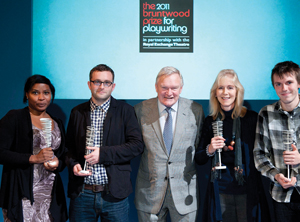The phoenix rises
In his recent AP blog, David Dixon asked who is supporting arts fundraisers now that Arts & Business is going…. But A&B isn’t going. Philip Spedding explains

I hope that David Dixon does not see our recent merger with Business in the Community as, in any way, the end of Arts & Business (A&B). We plan to continue with much of the same work we have always done. We will focus on working with corporate members BP, Sky arts, The Prudential, PwC, The Co-operative, Google, Bank of America, Ernst & Young, etc. to enhance and promote their support of cultural projects across the UK. Our Board Bank programme, placing individuals in business on the boards of arts organisation, remains extremely popular. Our training of the arts has gone from strength to strength. Our arts consultancy clients range from an amateur theatre in Cheshire to a major art gallery in Italy. And, of course, our engagement with business will get stronger, working with and building on the very successful membership model created by Business in the Community. So in many ways, it is business as usual.
But we will also remain very much in the philanthropy debate. Indeed, one of David’s longstanding criticisms of A&B has been his belief that we only focus on business. In fact we were keenly aware of the growing importance of individual giving even before the DCMS funded us, 12 years ago, to start a more active programme in this area. Since that time we have produced the most comprehensive figures on individual support of culture each year, written the UK’s first arts specific manual on raising money from individuals, trained hundreds of arts organisations in the skills needed, undertaken a shelf of research which continues to be frequently quoted (and were one of the primary funders of Theresa Lloyd’s definitive book on ‘Cultural Giving’), fed into the Treasury’s thinking on tax issues and created both the Prince’s Medal for Arts Philanthropy and the local ‘Cultural Champions’ programme. Given this, we were happy to accept Arts Council England’s invitation to be one of the regular speakers at the recent Catalyst Workshops across England that looked at individual philanthropy and fundraising and were pleased that those who came seemed to value what we had to say.
Indeed, we wouldn’t see fundraising from individuals and from business as two entirely separate forms of activity. The list of those people who have received the Prince’s Medal for Arts Philanthropy over the past four years underlines what most fundraisers already know: the top business people who decide whether their company sponsors the arts can often be significant individual supporters of the arts as well. The relationship between Lloyd Dorfman, Travelex and the National Theatre is one obvious case in point. Likewise Michael Oglesby in the North West shows how a passionate business leader, of Bruntwood fame, can also do an enormous amount of good for the arts in a personal capacity. The arguments needed to encourage businesses and individuals to invest in the arts may be different, but they both require as a foundation a good relationship between the person making the decision and the arts organisation. And exploring how that relationship can be strengthened has been one of the central tenets of the work of A&B for the past 35 years.
What is difficult to do without subsidy is run those elements of our work that cannot support themselves financially. We remain a charity and any income we generate from our more commercial activity will be ploughed into our other less commercial areas of work and much of that is arts focused. We absolutely agree with David that training and networking remain important and A&B has, of course, a strong track record in delivering both, helping arts fundraisers to share and learn from each other. What we now need to do is to look closely at what other provision exists to see where we can still add value – however, we would agree with the many arts organisations over the years who have told us that cultural fundraising is, in many important ways, different from wider charity fundraising and that those who specialise in that, such as the excellent Institute of Fundraising, may not be best placed to help the arts as well.
There is much to decide and much to do and we are excited about remaining a vital part of the cultural landscape, in all meanings of the word ‘vital’. Colin Tweedy will remain central to that as the interim leader for now and as a Vice President thereafter. Some of A&B will remain the same and some will change – but whatever A&B becomes, it would be a shame if we didn’t continue to inspire David Dixon to write his occasional broadsides. We know that David likes to ‘stir things up’ occasionally but whether he is accurate or not in what he says, it is vitally important that these debates happen in the arts. Ultimately, they make us all stronger.

Join the Discussion
You must be logged in to post a comment.